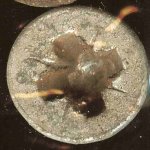Hello,
I have just started restoring an AH 100-6 and unfortunately have already stripped a few screws. I saw a couple of tools for this. Particularly "Craftsman 3 pc. Screw-Out™ Damaged Screw Remover Set" and "Craftsman 10 pc. Damaged Bolt/Nut Remover Set, Low Profile Bolt-Out". I am not sure how either of these work or if there are better products to help with this. Also, how can one try to prevent stripping the screws, etc. to begin with? From other postings I am worried about being able to find replacement parts.
Thanks for the help.
Don
I have just started restoring an AH 100-6 and unfortunately have already stripped a few screws. I saw a couple of tools for this. Particularly "Craftsman 3 pc. Screw-Out™ Damaged Screw Remover Set" and "Craftsman 10 pc. Damaged Bolt/Nut Remover Set, Low Profile Bolt-Out". I am not sure how either of these work or if there are better products to help with this. Also, how can one try to prevent stripping the screws, etc. to begin with? From other postings I am worried about being able to find replacement parts.
Thanks for the help.
Don

 Hi Guest!
Hi Guest!

 smilie in place of the real @
smilie in place of the real @
 Pretty Please - add it to our Events forum(s) and add to the calendar! >>
Pretty Please - add it to our Events forum(s) and add to the calendar! >> 

